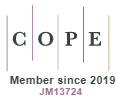Indian Sign Language Recognition System for Differently-able People
DOI:
https://doi.org/10.15415/jotitt.2014.22011Keywords:
Indian Sign Language, Open CV, Image ProcessingAbstract
Sign languages commonly develop in deaf communities, that can include interpreters and friends and families of deaf people as well as people who are deaf or hard of hearing themselves. Sign Language Recognition is one of the most growing fields of research today. There are Many new techniques that have been developed recently in these fields. Here in this paper, we will propose a system for conversion of Indian sign language to text using Open CV. OpenCV designed to generate motion template images that can be used to rapidly determine where that motion occurred, how that motion occurred, and in which direction it occurred. There is also support for static gesture recognition in OpenCV which can locate hand position and define orientation (right or left) in image and create hand mask image. In this we will use image processing in which captured image will be processed which are digital in nature by the digital computer. By this we will enhance the quality of a picture so that it looks better. Our aim is to design a human computer interface system that can recognize language of the deaf and dumb accurately.
Downloads
References
[2] C. Yu, X. Wang, H. Huang, J. Shen, and K. Wu, “Vision-Based Hand Gesture Recognition Using Combinational Features”, IEEE Sixth International Conference on Intelligent Information Hiding and Multimedia Signal Processing, 2010, pp. 543-546.
[3] D. y. Huang, w. c. Hu, and s. h. Chang, “Vision-based Hand Gesture Recognition Using PCA+Gabor Filters and svm”, ie Fifth International Conference on Intelligent Information Hiding and Multimedia Signal Processing, 2009, pp. 1-4.
[4] I. G. Incertis, J. G. G. Bermejo, and E.Z. Casanova, “Hand Gesture Recognition for Deaf People Interfacing”, The 18th International Conference on Pattern Recognition (ICPR), 2006.
[5] J. Rekha, J. Bhattacharya, and S. Majumder, “Shape, Texture and Local Movement Hand Gesture Features for Indian Sign Language Recognition”, IEEE, 2011, pp. 30-35.
[6] J. Weissmann and R. Salomon, “Gesture Recognition for Virtual Reality Applications Using Data Gloves and Neural Networks”, IEEE, 1999, pp. 2043-2046.
[7] J. H. Kim, N. D. Thang, and T. S. Kim, “3-D Hand Motion Tracking and Gesture Recognition Using a Data Glove”, IEEE International Symposium on Industrial Electronics (ISIE), July 5-8, 2009, Seoul Olympic Parktel, Seoul, Korea, pp. 1013-1018.
[8] J. L. Raheja, K. Das, and A. Chaudhury, “An Efficient Real-Time Method of Fingertip Detection”, International Conference on Trends in Industrial Measurements and automation (TIMA), 2011, pp. 447-450.
[9] L. K. Lee, S. Y. An, and S. Y. Oh, “Robust Fingertip Extraction with Improved Skin Color Segmentation for Finger Gesture Recognition in Human-Robot Interaction”, WCCI 2012 IEEE World Congress on Computational Intelligence, June 10-15, 2012, Brisbane, Australia.
[10] M. V. Lamar, S. Bhuiyan, and A. Iwata, “Hand Alphabet Recognition Using Morphological PCA and Neural Networks”, IEEE, 1999, pp. 2839-2844.
[11] Manigandan M. and I. M Jackin, “Wireless Vision-based Mobile Robot control using Hand Gesture Recognition through Perceptual Color Space”, IEEE International Conference on Advances in Computer Engineering, 2010, pp. 95-99.
[12] O. B. Henia and S. Bouakaz, “3D Hand Model Animation with a New Data-Driven Method”, Workshop on Digital Media and Digital Content Management (IEEE Computer Society), 2011, pp. 72-76.
[13] Pallavi Gujral, Kiran Kunnur,” Real Time Hand Gesture using SIFT”, International Journal for Electronics and Engineering, 2012, pp. 19-33.
[14] R. Gopalan and b. Dariush, “Towards a Vision Based Hand Gesture Interface for Robotic Grasping”, The ie/rsj International Conference on Intelligent Robots and Systems, October 11-15, 2009, St. Louis, usa, pp. 1452-1459.
[15] S. Saengsri, V. Niennattrakul, and C.A. Ratanamahatana, “TFRS: Thai Finger-Spelling Sign Language Recognition System”, IEEE, 2012, pp. 457-462.
[16] S. K. Yewale and P. K. Bharne, “Hand Gesture Recognition Using Different Algorithms Based on Artificial Neural Network”, IEEE, 2011, pp. 287-292.
[17] T. Kapuscinski and m. Wysocki, “Hand Gesture Recognition for Man-Machine interaction”, Second Workshop on Robot Motion and Control, October 18-20, 2001, pp. 91-96.
[18] W. W. Kong and S. Ranganath, “Sign Language Phoneme Transcription with PCA-based Representation”, The 9th International Conference on Information and Communications Security(ICICS), 2007, China.
[19] Y. Fang, K. Wang, J. Cheng, and H. Lu, “A Real-Time Hand Gesture Recognition Method”, IEEE ICME, 2007, pp. 995-998.
Downloads
Published
How to Cite
Issue
Section
License
Articles in Journal on Today's Ideas - Tomorrow's Technologies (J. Today’s Ideas - Tomorrow’s Technol.) by Chitkara University Publications are Open Access articles that are published with licensed under a Creative Commons Attribution- CC-BY 4.0 International License. Based on a work at https://jotitt.chitkara.edu.in. This license permits one to use, remix, tweak and reproduction in any medium, even commercially provided one give credit for the original creation.
View Legal Code of the above mentioned license, https://creativecommons.org/licenses/by/4.0/legalcode
View Licence Deed here https://creativecommons.org/licenses/by/4.0/
 |
Journal on Today's Ideas - Tomorrow's Technologies by Chitkara University Publications is licensed under a Creative Commons Attribution 4.0 International License. Based on a work at https://jotitt.chitkara.edu.in |











